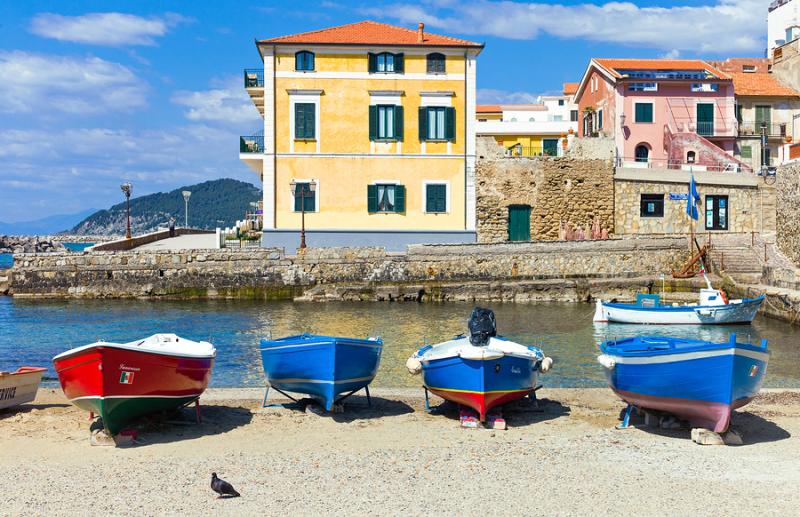Even though many foreign visitors (as well as Italians) still mistake it for Salento – the likewise beautiful area in Apulia region famous for its sandy beaches - Cilento deserves to be acknowledged for its own unique values.
Originating by the Latin word Cis Alentum (“on this side of the Alento”), the name of the charming area in the southern part of Campania region indicates that historically its boundaries have been mainly set by waters: the Tyrrenian sea on the coast, mostly made of pebbly beaches and spectacular rocky cliffs; and the Bussento and Alento rivers on the sides. The sharp mountain chain of the Alburni at its back, with its arduous passes, contributed to keeping the area isolated and pristine.
Today it’s generally typical to call it "Cilento,” also the area north of the Alento river. This includes the lively village of Agropoli and Capaccio, famous for the interesting archeological area of Paestum – with its stunning Greek temples – and of course for the delicious Mozzarella di Bufala Campana Dop.
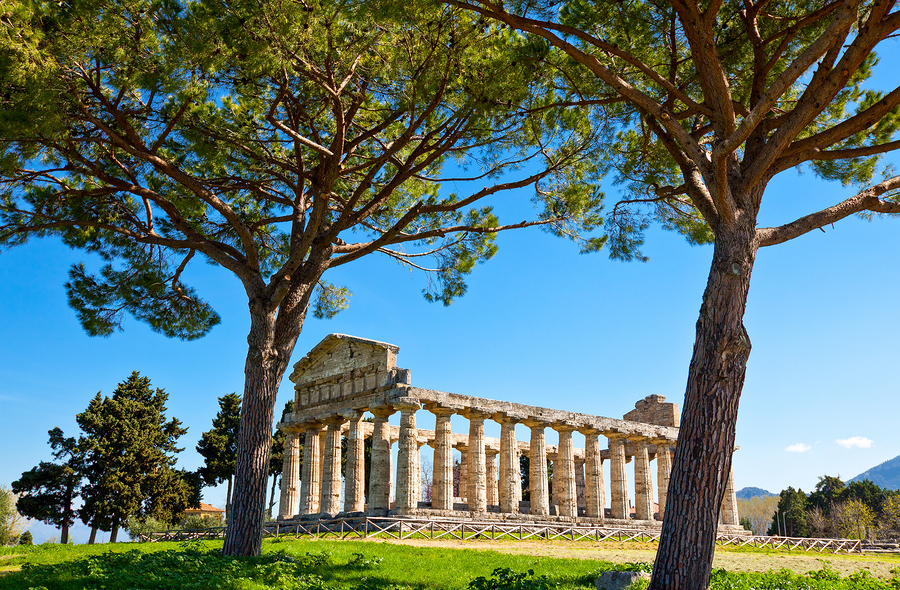
Yet the whole area extending from this point down to the southern border of the region, giving way to the short Basilicata’s coast and then to Calabria, is rich in natural beauties, historical sites, picturesque mountain hamlets and seaside towns and typical products and recipes. The area is also part of the Cilento and the Vallo di Diano National Park, and enlisted in the UNESCO World Heritage Sites since 1998.
It is not by chance that the US biologist Ancel Keys chose to live here the last years of his long lives, developing the famous Mediterranean Diet – the set of nutritional recommendations based on the dietary patterns of Southern Italy and other Mediterranean areas – observing the local food habits based on simple, seasonal and delicious products such as fish, vegetables, beans and olive oil.
Beaches and coves
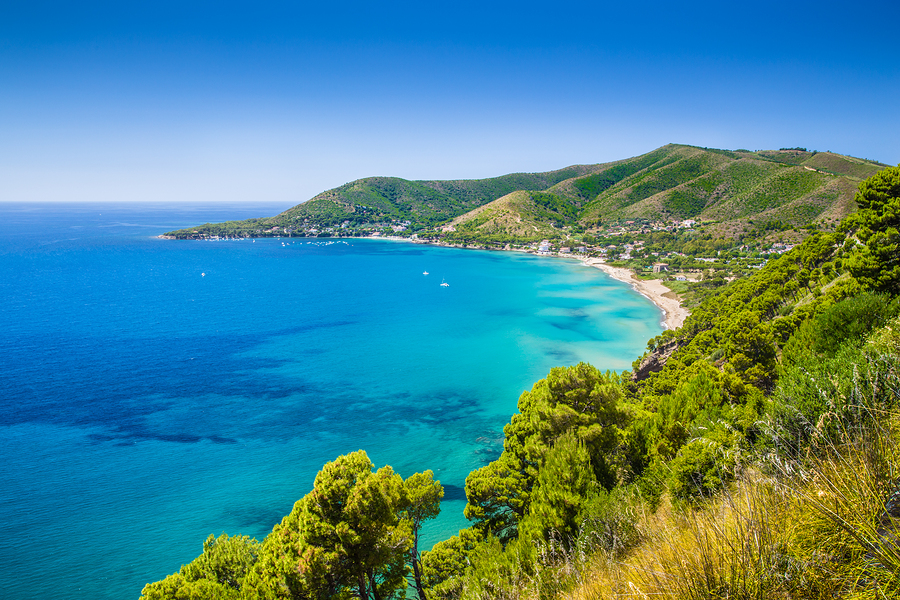
The jagged coastline situated between the gulfs of Salerno and Policastro is rich in marine life as well as in great places for a swim. Many of its beaches and coves deserve the Bandiera Blu acknowledgment which certifies the cleanliness of local waters, thus resulting one of the most awarded coastal areas of the whole Tyrrhenian Coast.
While in the northern stretch of coast there are mostly sandy beaches such as Trentova or Ascea, the southern one is characterized by many stunning bays, inlets and marine caves. Dreamy, pebbly beaches such as Cala Bianca or Cala d’Arconte are only accessible by boat, as well as the wonderful cove of the Infreschi, not far from the lovely sea village of Scario and part of the eponymous Natural Protected Marine Area.
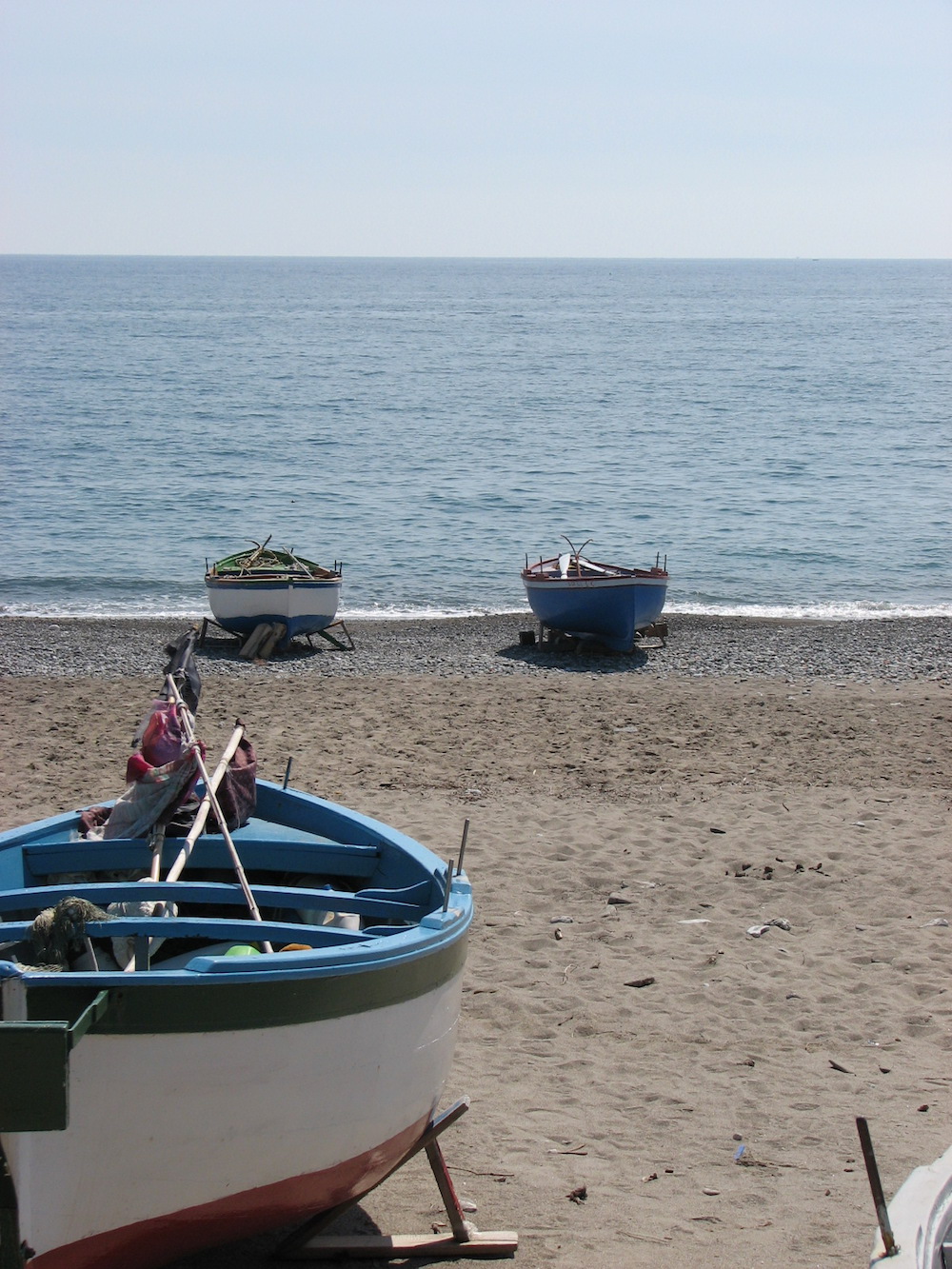
Picturesque hamlets and fishermen’s villages
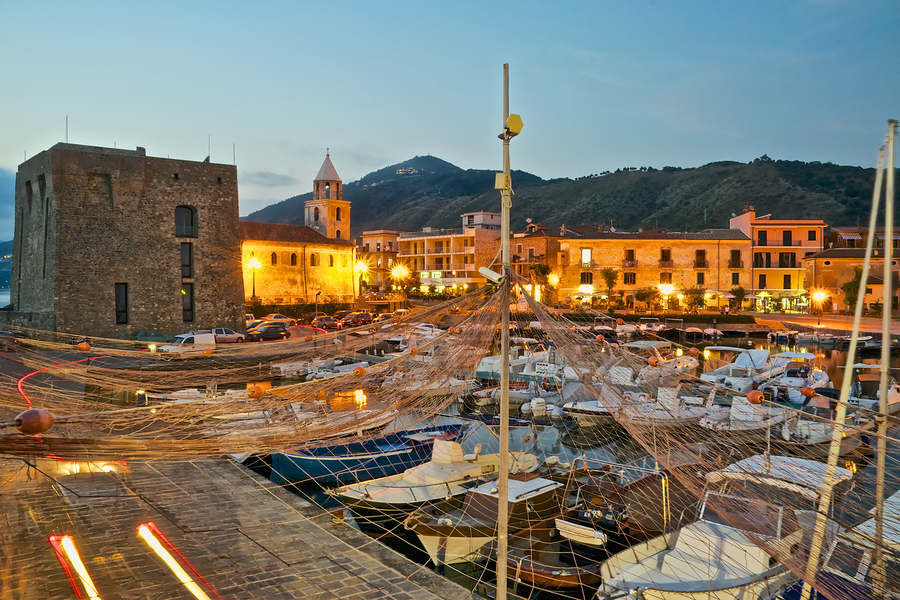 [Acciaroli, Italy]
[Acciaroli, Italy]
Along the Cilento coast it’s easy to find a number of peaceful and welcoming seaside towns where life moves a little quieter just like the lapping waters of their small harbors.
Castellammare is a lovely hamlet perched on a hill overlooking the sea and five small marinas, including the beautiful Licosa with its sandy beach.
Acciaroli is a placid fishermen’s village, which gets definitely livelier at summer when many tourists crowd its alleys and little squares. The upper part of the town – called Pollica – is a pretty medieval hamlet with charming period buildings. Pioppi – where Ancel Keys set his residence – is a tiny maritime district of Pollica which still keeps the slow paced rhythm and genuine habits of the past. Here it is possible to visit the interesting MuSEA-Museo Vivo del Mare dedicated to the local maritime fauna, and the Eco-Museum of the Mediterranean Diet, both hosted in the beautiful Vinciprova Castle. We already mentioned Scario, with its cozy marina packed with restaurants, trattorias and cafes.
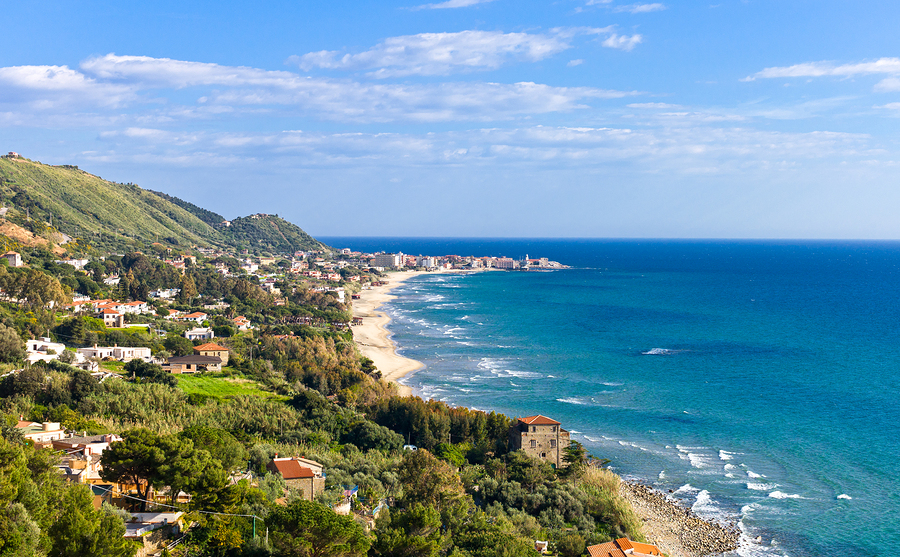 [Acciaroli, Italy]
[Acciaroli, Italy]
Yet, also the inner areas of the region are full of beautiful places to be discovered. Teggiano for example, whose medieval center is also enlisted to the UNESCO Heritage, is a picturesque hamlet perched on a spur of Mount Serra di Campo Soprano, probably dating back to the Greek colony of Tegea. Overlooking the entire Diano valley, its castle had a pivotal strategic role for the noble Sanseverino family. Every summer, the hamlet hosts the beautiful medieval reenactment of the Princess Costance’s wedding.
Roscigno Vecchia is nowadays almost abandoned and remains part of a mountain village: while the majority of the local inhabitants migrated or moved to the newer village, only mr. Giuseppe Spagnuolo chose to stay here as a guardian of the charming “ghost town”.
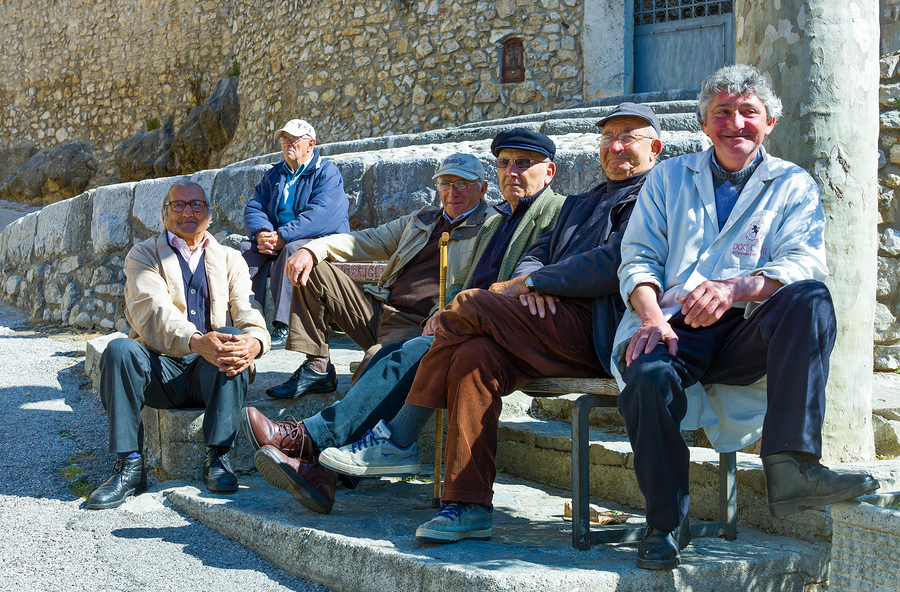
Wild, charming nature
Just like the coast is rich with spectacular caves and cliffs, also the inland here has plenty of places where Nature shows its (often pointy) charms: the spellbinding Pertosa caves are a karst tourist cave system not far from the eponymous village of Pertosa (famous for the exquisite local artichokes), close to the inner border with Basilicata. Widely extending in the underground of the eastern side of Alburni mountains, the caves were likely carved by the waters of the near Tanagro river; as a matter of fact, there still is a river flowing through the caves and forming a navigable underground lake.
In the hearth of the National Park, near the village of Felitto – where the traditional, long-shaped handmade fusilli pasta is the gastronomic emblem – the scenic Gole del Calore are a set of five deep gorges carved out by the Calore river and characterized by precipices, caves and old bridges. The forth one, named Remolino, is an ideal starting point for a beautiful trek – even horseback -, for canyoning or for a nice canoe ride or paddleboat tour.
Historical and archeological treasures
Cilento’s history dates back to the ancient Greek colonies of Magna Graecia and in the entire area there are still many evidences of it. Beside the already mentioned, unmissable archeological park of Paestum– also including an interesting museum -, the beautiful site of the ancient Greek town of Elea-Velia is located near the seaside resort of Ascea Marina, is well worth a visit, too.
Of more recent origin is the grandiose Certosa di Padula (Padula Charterhouse), part of the UNESCO World Heritage List. Founded by Tommaso di San Severino in 1306 on the site of an earlier monastery, this is a large, mostly baroque-style building with beautiful cloisters, chapels and impressive scagliola (stucco) decorations.
In the countryside of Pattano, a small village near Vallo della Lucania, the evocative ruins of an ancient Italo-Greek abbey stand beside the tiny chapel devoted to Philadelphus, a martyr saint whose life is narrated in what remains if the stunning byzantine frescoes.
Basilian monks - following the rule of Saint Basil the Great, later adopted by the Eastern Orthodox Church - left signs of their presence here, too, such as the beautiful chapel of St. Mary of the Martyrs in Lentiscosa and the cenoby (religious residence) in San Giovanni a Piro.
Healthy and tasty flavors
Fish, beans, dairies, vegetables, fruit, extra virgin olive oil, wine. The staples of Cilento’s culinary tradition – once considered humble foods, today much cherished – perfectly match the Mediterranean Diet guidelines. The delicious menaica anchovies (from the name of the special net used to fish them) of the gulf of Pisciotta are eaten both preserved or fresh, in many local recipes such as the alici inchiappate, stuffed with local mature cheese, eggs, garlic and parsley, fried and then cooked in tomato sauce. Try them and many other excellent dishes at Angiolina, a lovely fish trattoria facing over the sea.
While the best Buffalo Mozzarella comes from Paestum and Battipaglia, in the southern areas of Cilento you can find the tasty “mozzarella nella mortella”: a dryer cow’s milk mozzarella wrapped up with myrtle leaves to keep it fresh. In the inlands many rare varieties of beans are grown, such as the delicious chickpeas of Cicerale: go visit Giovanna Voria at the Corbella farmhouse to taste them in many different recipes.
The sweet and tasty local white figs are eaten both fresh, in season, and dried, especially as a Christmas delicacy.
Yet, over the last years also two more foods became very popular in Cilento: pizza and gelato.
You will find many good examples of an interesting mix between the traditional, thin local pizza and the glorious, softer Neapolitan Pizza dough topped with typical products, made by young pizzaioli such as Angelo Rumolo at Grotto Pizzeria Castello in Caggiano, Paolo De Simone at Da Zero in Vallo della Lucania and Valentino Tafuri at Pizzeria 3Voglie in Battipaglia.
Hidden in the newest part of Torchiara, a secluded village up on the hills not far from Paestum, the Antica Gelateria Di Matteo is the place to go to eat the wonderful ice-cream and slushes made by Raffaele Del Verme, from the exotic cocoa varieties to local fruits such as mulberries and figs.
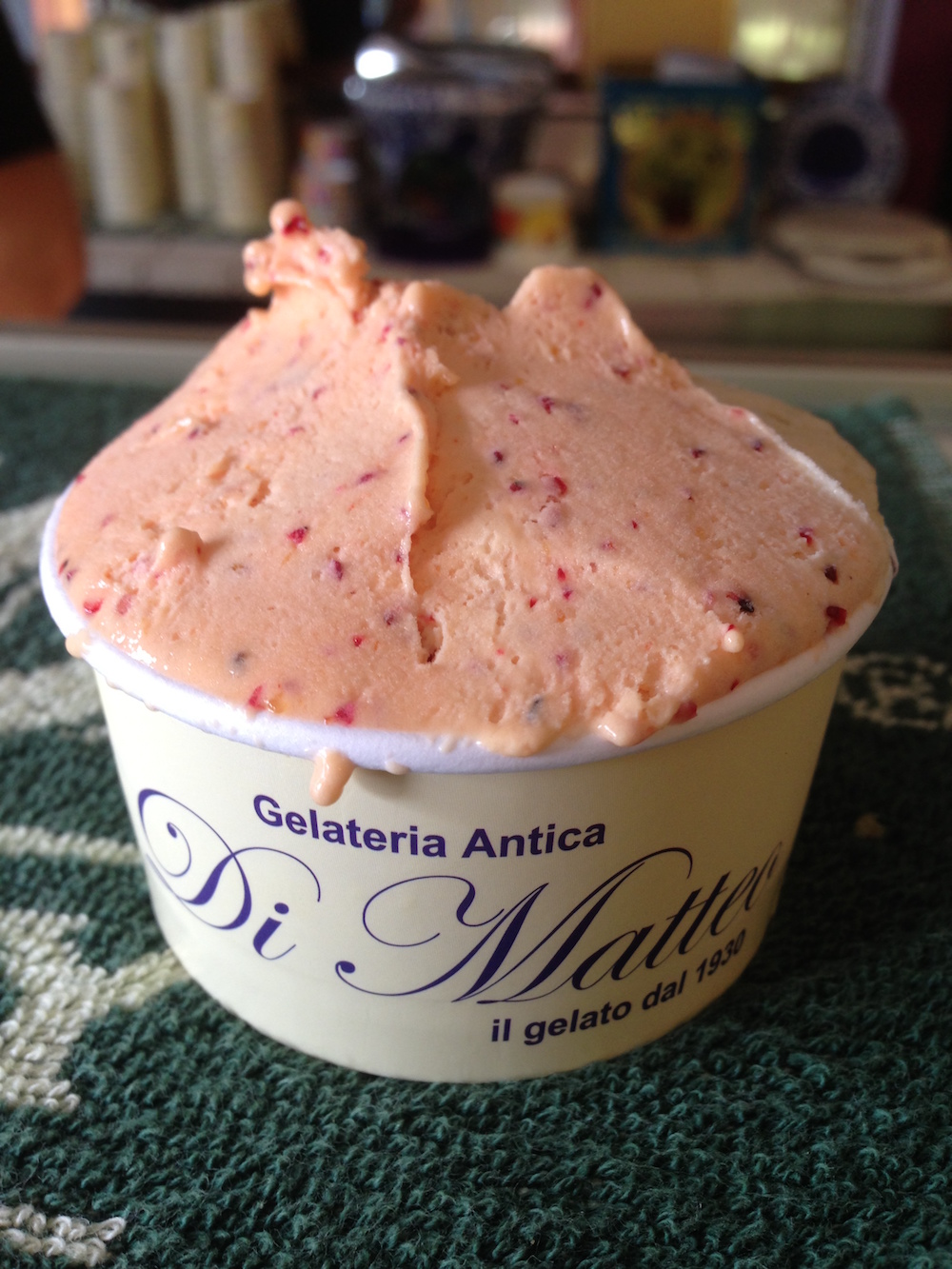
if you prefer to stay by the sea, head to Crivella, the ice-cream parlor on the seafront of the welcoming sea resort town of Sapri, at the far end of Campania region. Established by Enzo Crivella – a true ambassador of Cilento’s flavors – it is a homage to his father’s memory, the first ice-cream peddler of the area.
Mostly using local and organic ingredients, Enzo’s ice-cream is taking Cilento’s reputation well beyond the region’s borders.
